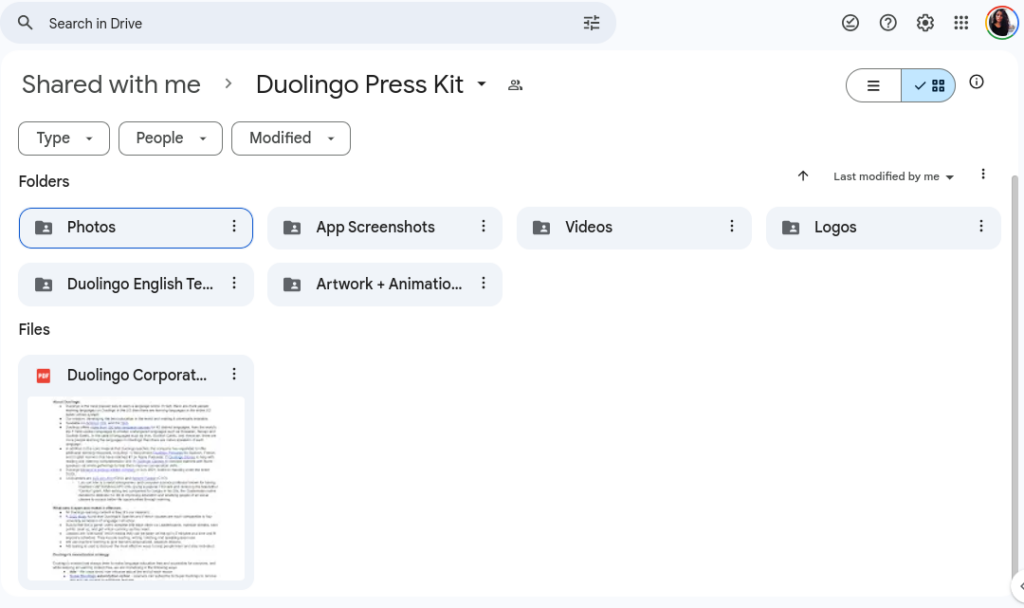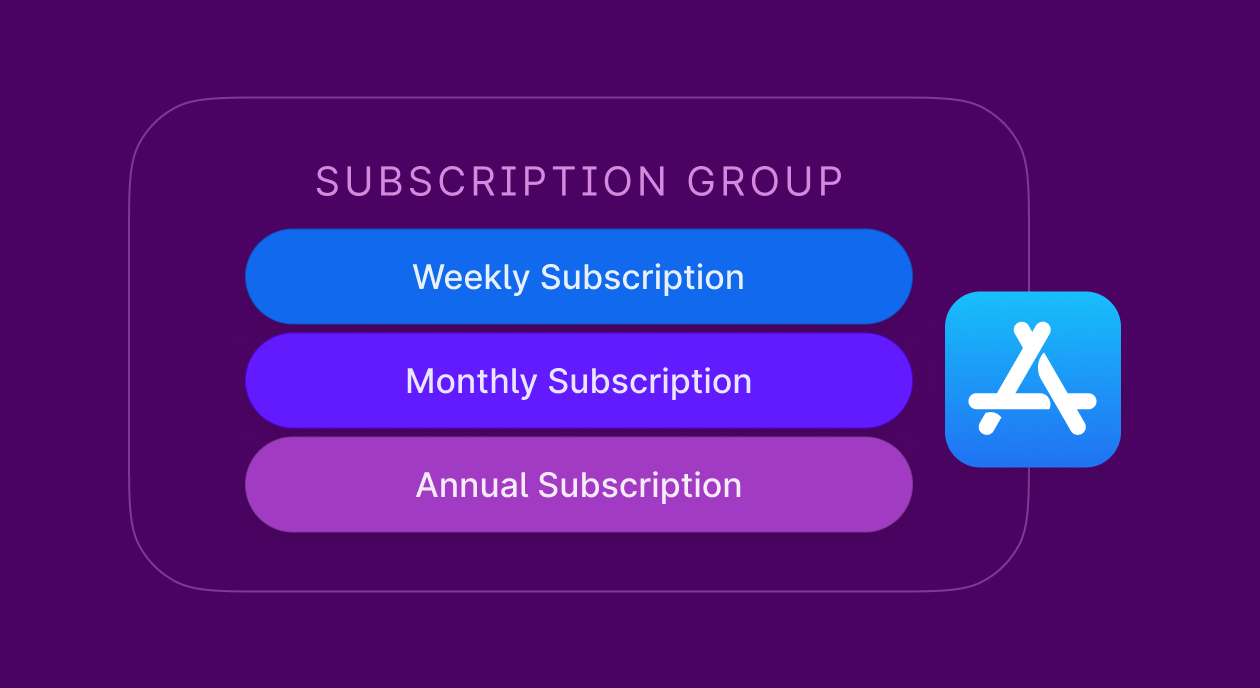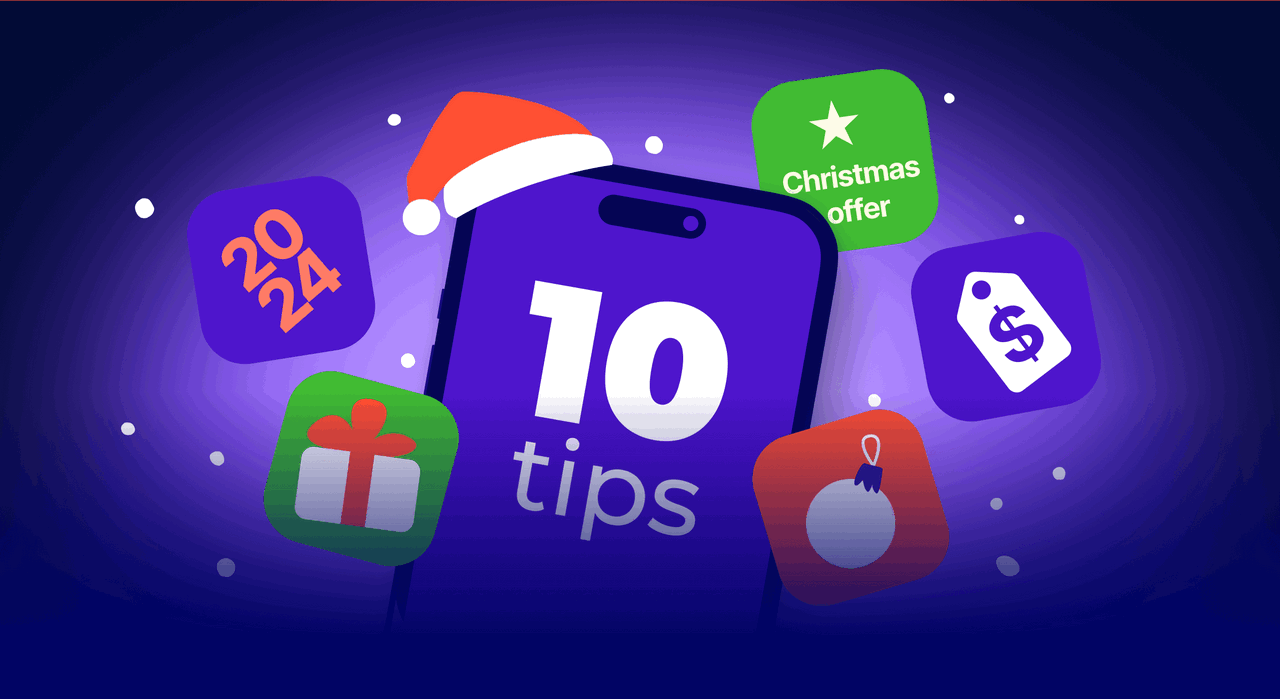If you review the top apps in your category or even your top competitors, you’ll find PR coverage to be a big part of their growth stories.
The way PR marketing works for mobile apps is pretty straightforward: About 21% of people turn to search engines to find the best apps for whatever it is that they need help with. And when they Google, Google returns with stories from everywhere on the web—”X best apps for Y,” for instance. This is how users learn about new apps and get them. Also, people tend to get apps based on recommendations. So if they see their favorite magazine, journalist, or influencer rave about an app, they might just want to get it (even if they weren’t actively looking for it). Positive third-party mentions boost app credibility too. So, people who’ve already discovered your app also feel inspired to download it. The results? Even more downloads. You get the drift.
Running public relations campaigns for your app is all about making your app a part of all such conversations everywhere on the web. In today’s article, we’ll see everything you need to know to add PR marketing to your mobile app marketing mix. We’ll first see what public relations is in detail and how PR marketing works for mobile apps! Here goes.
Defining public relations (PR)
A lot of people use “public relations” and “press releases” almost interchangeably. But the fact is that press releases are just one part of the public relations mix. The best way to understand what public relations is is to see how the public relations industry defines it. In 2012, the public relations industry defined—or, rather, redefined—public relations to reflect its evolution over the years. Here’s the definition the industry settled for from the different available options:
“Public relations is a strategic communication process that builds mutually beneficial relationships between organizations and their publics.”
As you can tell from the definition, public relations is all about businesses having conversations with their target audiences and communicating how they drive value for them.
Zooming in on the public relations mix
Public relations comprises several elements, all working together to build consistent messaging for the intended audiences, aiming to convert them into customers. These include everything from media relations and social media engagements to community commitments. Together, they shape public perception, enhance brand reputation, and ultimately help achieve business goals.
Public relations includes a lot of different things, such as:
- Press releases
- Influencer partnerships
- Social media engagements
- UGC campaigns
- Community events
Let’s now see how public relations can help you achieve your app’s business goals.
Why do you need PR marketing for your app
Public relations campaigns boost brand awareness. PR campaigns like press releases help you get your app featured in widely read publications, helping you break into newer audiences and reach more potential app users. Newer PR formats like influencer collaborations and social media engagements are also effective at this.
Public relations initiatives support SEO. Outlets that feature your app often link to your app website or listing, thereby giving you backlinks and boosting your SEO. These mentions drive targeted visitors to your website as well.
Public relations marketing increases brand consideration. When potential app users see a credible third-party website write positively about your app or see their favorite influencer recommend your app, they’re more likely to download or purchase it, as such campaigns build trust and credibility.
Public relations programs help with app engagement. Newer forms of public relations campaigns like user-generated content (UGC) campaigns help create authentic connections with your app’s audience and drive user participation.
Public relations drives boost user retention. Public relations is also about communicating with existing users. When you use PR campaigns to communicate your app updates and improvements and announce new features, you can boost user retention too. Active PR campaigns also show that you’re seriously invested in your app and that users can invest in it too.
So right from app discovery and consideration all the way to retention, public relations campaigns play a big role in your app growth. Here’s how you can get started with PR marketing for your mobile app.
Running traditional PR marketing campaigns for your mobile app
Let’s talk about press releases first, as writing and distributing press releases is the most traditional form of PR marketing.
Simply put, press releases are any “news” announcements or official statements you put out to media outlets and beyond. Press releases are usually distributed through newswire services like PR Newswire. Distributing your press releases through such services lets you broadcast them to thousands of publications and journalists on their network. Depending on your press release, publications or journalists can choose to feature you in their stories.
There are a few ways to approach PR marketing for your app. The first one is newsjacking. Here, you pick up the trending topics in your niche and try to become a part of the conversations happening around them on the different media outlets. For example, when the US Supreme Court passed a judgement on an abortion matter, period tracking apps became one of the focal points of discussions. Many apps were covered in many publications around that event:

As you can get, to make the most of newsjacking, you need to stay on top of what’s happening in your niche and launch timely communications around it. For example, in this case, it could be your official statement on how you approach sharing user data. Tools like Buzzsumo help with such newsjacking. Also, when journalists work on such content, they often post queries on platforms like Twitter. So you need to be active on these platforms to be ready to field such queries to get cited.
Another way that mobile app businesses use press releases is around app launches. Mobile app launch PR campaigns are all about introducing a new app to the market. These press releases reach a lot of media outlets and potential users and give an app good exposure.
Finally, apps that are serious about PR marketing set up complete newsrooms. Here, you announce everything about your app to the press because press coverage is never a one-time thing. Look at the most popular apps in your niche, and you’ll see that they routinely get featured in media stories. This isn’t by coincidence but through ongoing PR efforts. So, once you start with PR marketing, treat it like an always-on campaign. These are some stories you’d want to distribute as part of such PR campaigns:
- App launches (or relaunches)
- Rebranding
- Major releases
- Major milestones
- Sales and offers
- Partnerships and collabs
And so on.
Influencer marketing—one of the newer forms of public relations marketing
While influencer marketing is a form of social media marketing—because influencers are essentially social media or “internet” celebrities with significant followings on platforms like YouTube, Instagram, TikTok, etc.—it’s now loosely included in PR.
Here, you tap the “influence” of “influencers” to break into highly targeted audiences. For example, if you’ve got a productivity app, you’d team up with an influencer who creates content on productivity. Generally, the larger the following an influencer has, the higher the collaboration will cost you. However, with the rise of micro and nano influencers—influencers with smaller but loyal followings—influencer marketing can be well within reach. Generally, expect to pay about $100 per 10,000 followers. So, if a micro influencer has about 12,500 followers, you’re looking at about $100 for a story. Influencer marketing PR campaigns can take many forms—from simple mentions to full-blown stories.
Like press release marketing, influencer marketing shouldn’t be a one-time thing. Focus on building a meaningful relationship with an influencer so they keep talking about your app every once in a while. Just like press releases, plan influencer campaigns around all major app events like new releases or sales, and so on.
Finally, there’s social media PR marketing
Social media marketing PR—again, this is very much like traditional social media marketing—is all about getting people to talk about your app on social media.
If you compare social media PR with traditional and mediated PR formats like media communications and even the newer forms like influencer marketing, you’ll see that social media marketing PR facilitates direct two-way communications between you and your audiences.
Social media PR also lets you run user-generated content campaigns, where users become active participants and contribute to your brand narrative. Because user-generated campaigns come directly from users, they feel authentic and help amplify your brand’s reach. This authenticity is missing in traditional PR formats, where the brand controls the messaging.
Any social media initiatives you plan as part of your PR marketing must be around topics that resonate with your users. Again, staying on top of your industry news is crucial to capitalize these.
Now that you know what PR marketing for your app looks like, let’s see how you can get the best press and media coverage that actually translates to growth for your app.
Choosing publications and collaborators to pitch
Effective PR marketing isn’t about haphazardly featuring your app in media publications, partnering with random influencers, or running ad hoc social media campaigns. Instead, it’s about using communications strategically to reach very targeted audiences.
For instance, if you’ve got a general app—like apps for sleep, meditation, or journaling—you can get featured in most general publications, as they routinely feature stories that organically fit apps like yours. Because such apps cater to broad user demographics, getting featured in even general publications can get you good exposure.
On the other hand, if you’ve got a niche app—a game, for instance—you’d want to target publications that cater to gamers.
One way to find such publications is to simply pick the most popular apps in your niche or among your top competitors and see the publications that feature them.
Just Google the app’s name and switch to the “news” section. The news section prominently features results from media outlets, niche news magazines, and “newsy” websites. Below, you can see how this works:

You can also set up Google Alerts for all these app keywords. This way, Google will notify you whenever they get featured anywhere on the web.
Now, as you can see, this method is pretty manual. But there are PR solutions that can help you automate this research process and even help you with end-to-end PR marketing. Some of these PR solutions also offer done-for-you PR marketing services. However, these solutions can run hundreds of dollars a month. So these options may only work for you if you’ve got a well-funded app, have the bandwidth, or generate enough profits.
This same process applies to influencer marketing collaborations as well. You only want to partner with influencers already influential with your target audiences.
As you can imagine when websites, influencers, or bloggers write about you, they often need some media content to feature in their stories. They might also need quotes from you. For these, you need to put together a “PR kit.”
Creating a PR marketing kit for your mobile app
These days, what you’d traditionally refer to as a “PR kit” is called a brand resource center. Your app’s brand resource center needs to have your brand assets that media houses can use when they feature you. In fact, anyone you collaborate with on any PR activity should be able to access your app’s branding stuff easily here.
Most apps simply set up a “PR kit” Google Drive folder with subfolders with all the different stuff and post a link to it on their websites. Here’s the language app Duolingo’s press kit for inspiration:

It would be handy to put this together as you start with PR marketing. At the very least, your app’s brand resource center needs:
- Your app bio: Start off by offering a quick bio of what your app does. Make this compelling, as many campaigns might reuse it as is!
- Logo: Next comes your logo. Add a high-resolution, downloadable logo file. If you’ve got any specifications about how your logo can or can’t be used, list them. It’s common to offer the logo in light and dark variations.
- A gallery of images: These can be everything from high-resolution screengrabs from your app to photos of your team (headshots) or snapshots from the different events you participate in.
- Contact information: List an email that people can contact if they have any questions or need quotes.
- A “Featured coverage” section: If you’ve secured any press coverage, you may want to list that here. Such coverage can act as excellent social proof. You can also list all your press releases here.
Monitoring, measuring, and optimizing your PR marketing ROI
When you plan PR campaigns, you need to measure two kinds of metrics:
- Top-funnel metrics like media coverage and the volume of referral traffic it generated for your app listings.
- Bottom-funnel metrics like data on the app purchases or in-app purchases these users made.
The first set of metrics is readily available through the app stores. If you want to check if your app’s general brand awareness has improved, you can see if you’re generating more “search” traffic for your app’s branded keywords. If you did a lot of press outreach, you may want to check if your referral traffic has increased.
Likewise, if you want to check if you’re getting more conversions, your app listing conversion rate metrics can show that.
But about the second set, the app stores can only do a little. For example, let’s say you attribute 10,000 app downloads to your different PR stories. But what do these 10,000 app downloads actually translate to? In other words: How much does a user you acquire through some PR story mean to you? What’s their average lifetime value?
Monitoring their in-app behavior and how it ties to revenue is important. You’d want to know what such users’ in-app behavior looks like. Do they make in-app purchases? What kind of in-app purchases do they make? And so forth.
You’d also want to know your average acquisition cost for the PR channel. That way, you’d know what results you could realistically achieve through PR marketing for a specific budget.
To find these answers, you need an app revenue analytics platform like Adapty. With Adapty, you can zoom in and trace the revenue journey of the users you acquire through your different PR marketing campaigns:

Wrapping it up…
When you review how the top user acquisition channels work, you’ll see how the key ones, like search and recommendations, tie directly to press coverage. Unlike paid marketing, a lot of PR marketing is organic and keeps sending you users all the time. This isn’t to say that PR marketing doesn’t cost money, but when done right, your investment keeps paying off. Besides we’ve also discussed how PR marketing is ongoing, making it an “always-on” user acquisition and conversion channel.
Also, when you acquire users via PR marketing, it’s essential to tie top-of-the-funnel metrics like downloads to user revenue, because revenue represents your real app growth. Use a solution like Adapty to add revenue analytics to your PR marketing for this part. With Adapty, you can easily track the revenue journey of the users you acquire through your various PR marketing drives and optimize your PR spend. Learn more about how Adapty can help you grow your app.
Finally, keep patience and keep trying. A typical new app with a few dozen users will take time to get noticed, even with dedicated PR efforts. Remember that it gets easier with time: once your app starts getting exposure, it will start earning more of it organically. In other words: the first few mentions will be the most challenging to secure. But now that you know everything you need to get started, there’s no reason not to try!




